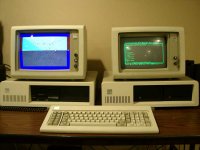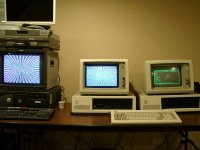evildragon
Veteran Member
I'm glad you're happy, haha. It was quite a surprise after the repairs to the traces and reflowing the bad solder pads (I went ahead and added a little new solder too). At first I was just getting a bump from the fan, but no voltage longer than a split second. Then I figured the load I had may not have been enough. Attached another drive, and the fan ran for a good second, but still died. So then I tried a load that also took the -12v and -5v (a motherboard) and viola, the PSU ran and kept running. I also tested the voltages to make sure they were fine, and if I needed to, adjust it so it was within it's proper range. However, it was so perfect as it is, I didn't bother with adjustments. By the way, the PSU was dated inside under the PSU board, 1983.First of all, I can't thank you enough. If I could transform into an anime teenage girl and jump up and down clapping without seeming pervy, I would do that in a heartbeat.
Secondly, thank you for the close-up shots of what popped cold soldier joints look like, as well as what testing voltage with a multimeter looks like. I am less scared of electronics now, and if I had known that repairing popped joints was just a matter of heating up the soldier and reflowing it, I might have taken that on. In fact, I think the next time I have something like this happen, I will likely use it as an excuse to buy an iron and just give it a shot.
Some of the solder pads required more than reflowing. Some of them were literally ripped from the board, and required a wire that was the right gauge to handle the current, to basically reconnect the traces to their destinations.
I'm going to re-use the box you sent me, but put in more extra padding (you packed it very well but I just don't trust the USPS after seeing how badly torn those solder pads were).





